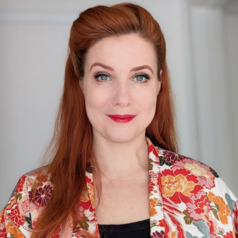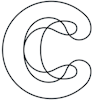|
|
|
|
In 1993, a Russian spacecraft equipped with a giant mirror travelled across Europe for a few hours before burning up in the atmosphere. It created a five-kilometre wide spotlight, and the few people who saw it beyond the clouds reported a bright flash of light.
Why do such a thing? The goal of the Znamya project was ostensibly to extend winter daylight hours in Russia’s polar regions. However, the expensive plan never eventuated.
Now, a US startup called Reflect Orbital is proposing to build a giant mirrored satellite constellation to supply nighttime light to solar farms on the ground. They’ve applied for a test launch next year.
If that’s not raising alarm bells in your head, it should – astronomers warn that even if the mirrors worked as advertised (which is dubious), the consequences would be dire.
Until next week,
|

|
Signe Dean
Science + Technology Editor
|
|

Michael J. I. Brown, Monash University; Matthew Kenworthy, Leiden University
Satellites beaming sunlight down to Earth sound like science fiction – and they have astronomers very worried.
|

Tara Djokic, Australian Museum; UNSW Sydney
Highly detailed fossils are typically found in shale or other fine-grained sedimentary rocks. These ones? They’re made of iron.
|

Sarah Perkins-Kirkpatrick, Australian National University; Andrew King, The University of Melbourne; Nicola Maher, Australian National University; Wesley Morgan, UNSW Sydney
The results challenge claims that the climate risks posed by an individual fossil fuel project are negligible or cannot be quantified.
|

Nick Fox, Te Kunenga ki Pūrehuroa – Massey University; Matt Williams, Te Kunenga ki Pūrehuroa – Massey University; Stephen Hill, Te Kunenga ki Pūrehuroa – Massey University
One prominent theory says conspiracy beliefs are triggered by elevated distress. But a new study finds limited evidence to support this claim.
|

Emery Schubert, UNSW Sydney
Here’s what happens in your brain when you can’t get a tune out of your head.
|
Our most-read science articles this week
|

Deanna D'Alessandro, University of Sydney
Richard Robson was struck by an idea in 1989. Decades later, his story shows the importance of fundamental science.
| |

Sheila Skeaff, University of Otago
Most New Zealand adults consume more protein than the recommended amount. They could reduce meat without risking inadequate protein intake.
|

Anastasia Hronis, University of Technology Sydney
Modern life bombards our brains with stimulation, through scrolling feeds, video games, email pings and sugary snacks. Can going without for 24 hours help?
| |

Darryl Jones, Griffith University
In 2002, an online database was set up allowing birdwatchers to record their species observations. It is now a vast resource, shaping scientific research.
|
|
|
More of this week's coverage
|
-
Caitlyn Forster, University of Sydney
With the warmer weather come more of these fluttering insects – which can be easily confused with each other.
-
Sarah Annesley, La Trobe University
Diagnosis for myalgic encephalomyelitis/chronic fatigue syndrome currently relies on sometimes controversial diagnostic criteria – and can take years.
-
Zena Assaad, Australian National University
AI weapons present many challenges – but these ultimately stem back to people.
-
Jon C. Day, James Cook University
Globally important natural areas such as Ningaloo and Shark Bay have been hard hit in recent years. But Macquarie Island is recovering.
-
Mark A Gregory, RMIT University
While it might seem simple, there are many steps involved between you calling Triple Zero, and paramedics, police or firefighters arriving to help.
-
Johanna Lim, University of Sydney
Australia could be a global champion for sustainable data centre growth.
|
|
| |
|
|
|
The Conversation AU/NZ
Melbourne Victoria, Australia
•
Full Time
|

|
|
|
|
Featured Events, Courses & Podcasts
|
View all
|
|
22 October 2025
•
Carlton
|

|
11 - 12 November 2025
•
Parkville
|

|
21 October - 19 November 2025
•
|

|
5 November 2025
•
Clayton
|

|
|
|
|
| |
| |
| |
| |
| |
|
|
|
|
|
|
|